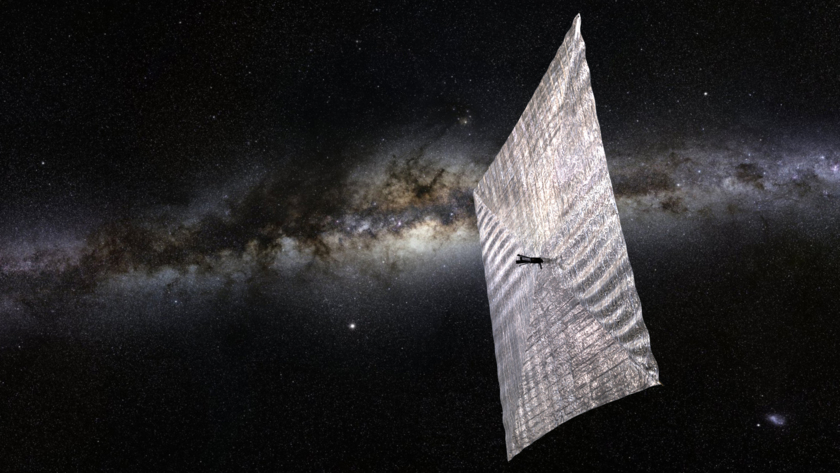

LightSail has finally seen the light. After a tumultuous time in lower Earth orbit, the Planetary Society’s solar sail spacecraft has at last deployed its namesake: four large mylar “sails” that theoretically use energy released from the Sun to propel the satellite forward. Now that they’re deployed, the sails won’t actually be doing any sailing, but for the Planetary Society, it’s nice to know that their engineering does indeed work.
Getting to this point marks a momentous landmark for the non-profit organization helmed by Bill Nye, the “Science Guy”—especially since the LightSail test mission has been plagued with issues since its launch from Cape Canaveral, Florida. For this test, the Planetary Society simply wanted to see if the spacecraft’s mylar sails could deploy as expected in space. However, a number of odd glitches made this deployment almost seem like an unattainable goal.
After just a few days in space, LightSail stopped communicating with flight controllers, due to an unforeseen computer glitch that overwhelmed the spacecraft’s system. Fortunately, aid came in the form of a deep-space cosmic ray, which found its way into the spacecraft’s mainframe and rejiggered the electronics back online.
This intergalactic reboot was short-lived, however, when LightStail stopped communicating with Earth yet again just a few days ago. This time, problems stemmed from the release of the spacecraft’s solar panels, which had been repositioned to make way for the sail deployment. After releasing the panels, LightSail’s batteries weren’t drawing enough power from the Sun, and it went quiet for a second time, as the research team desperately tried to reboot the satellite as it passed by ground control.
Well, it looks like one of those orbital pass reboots finally did the trick. Its motor came to life on Sunday at 3:47 p.m. EDT near Baja California, Mexico, release the mylar sheets. According to the Science Guy:
Now that the primary goal of this mission is complete, the Planetary Society will use what they’ve gleaned from this go around to further strengthen their next test of LightSail, scheduled for 2016. For that test, which the non-profit is partially funding through Kickstarter, a spacecraft outfitted with solar sail technology will be launched into much deeper space—about 450 miles above the surface of the Earth. There the solar sails will both deploy and catch the breeze of solar winds, sailing on the high seas of the interplanetary vacuum. If that proves successful, solar sailing could dramatically reduce the cost of future space travel for unmanned spacecraft, says Nye, since no propellant is necessary for the sails to function. All you need is the ever-accelerating photons shooting out from the Sun.
But for now, congratulations are in order for the Planetary Society. Time to celebrate with some sun and sailing here on Earth.
